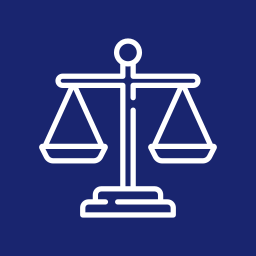The “automatic stay” prevents creditors from pursuing you and your assets as of the moment your bankruptcy case is filed, and usually prevents them doing so as long as your case is active.
The automatic stay gives you immediate relief from ongoing creditor actions such as wage garnishments, lawsuits, vehicle repossession, home foreclosure, creditor phone calls and collections letters.
THE EFFECT OF REPEAT FILING ON THE AUTOMATIC STAY
If you have been a debtor in a prior bankruptcy case which was dismissed within the year before your bankruptcy case is filed, the automatic bankruptcy stay will terminate within 30 days of the filing of the new case, unless: 1) you request by motion that the court enter an order extending the stay; 2) the request is filed with the bankruptcy court before the expiration of the 30 days, and 3) you persuade the court that the new case was filed in good faith and the court grants the motion and extends the stay within 30 days after case commencement. It is likely that the court will schedule a hearing on such motion and that the debtor will be required to appear in court. (Please consult Section 362(c)(3) of the Bankruptcy Code for more specific requirements.)
If you have been a debtor in two or more bankruptcy cases dismissed within the last year, no automatic stay goes into effect and no stay will go into effect unless and until: 1) you request by motion that the court enter an order extending the stay; 2) the request is filed with the bankruptcy court within 30 days of the filing of your new case, and 3) you persuade the court that the new case was filed in good faith. It is likely that the court will schedule a hearing on such motion and that the debtor will be required to appear in court. Unless and until you persuade the court to extend the stay, your creditors may proceed against you as if no bankruptcy case was filed. (Please consult Section 362(c)(4) of the Bankruptcy Code for more specific requirements.)
WHAT CAN YOU DO IF YOU HAVE ONE OR TWO DISMISSED BANKRUPTCIES AND NEED TO FILE AGAIN?
First, if you can, delay filing the new bankruptcy case until it’s been more than 1 year since the prior case was dismissed.
Second, if you can’t delay filing, your attorney will need to file a motion to either extend the automatic stay if you had one prior dismissed case within 1 year, or to impose the automatic stay if you had two or more prior dismissed cases.
Either way you would have to convince the bankruptcy court that the extension or imposition of the automatic stay would be in good faith as to the creditors to be stayed.
THE GOOD FAITH REQUIREMENT
In general you need to show that in your prior bankruptcy filing the new filing that you are using the bankruptcy laws appropriately, and not to harass and delay creditors. You would explain the circumstances of the prior filings, why the case(s) was (were) dismissed, and the legitimate reason(s) for filing the new case, including the intent to proceed with the new case to its completion.
The Bankruptcy Code imposes an extra hurdle for debtors whose prior cases were dismissed under certain circumstances by increasing the burden of proof in proving good faith. Normally, the debtor would have to show good faith “by preponderance of the evidence”. If the prior case(s) were dismissed for certain reasons, the new case will be considered “presumptively filed not in good faith, but such presumption may be rebutted by clear and convincing evidence to the contrary. This higher burden of proof applies to prior case dismissed for one of the following reasons:
- The debtor failed to file or amend the petition or other documents as required by the Bankruptcy Code or the court without substantial excuse (but mere inadvertence or negligence shall not be a substantial excuse unless the dismissal was caused by the negligence of the debtor’s attorney).
- The debtor failed to provide adequate protection (i. e., payments to secured creditors) as ordered by the court.
- The debtor failed to “perform the terms of a plan confirmed approved and ordered by the court.
- There has not been a substantial change in the financial or personal affairs of the debtor since the dismissal of the next most previous case under chapter 7, 11, or 13.
- There isn’t reason to think that the new case will successfully result in either a Chapter 7 discharge or a Chapter 13 plan approved by the court and fully performed by the debtor.
- If in the prior case a creditor filed a motion for relief from stay, and at dismissal “that action was still pending or had been resolved by terminating, conditioning, or limiting the stay.”
of the good faith standard, it would seem that most of the time a judge would find a debtor’s good faith or lack of it based on the overall fairness of the situation—the circumstances in which the prior case(s) was (were) filed and the present one is being filed—and would do so irrespective of the relatively subtle differences in these two standards of proof.
If you are considering filing for Chapter 7 or Chapter 13 bankruptcy, call the law firm of Tim W. Smith at (615) 796-1857 or complete the online form. We offer free initial consultations with an experienced bankruptcy attorney.
DISCLAIMER: WE ARE A DEBT RELIEF AGENCY. WE HELP PEOPLE FILE FOR BANKRUPTCY UNDER THE BANKRUPTCY CODE. THIS IS NOT A RENDERING OF LEGAL ADVICE.


